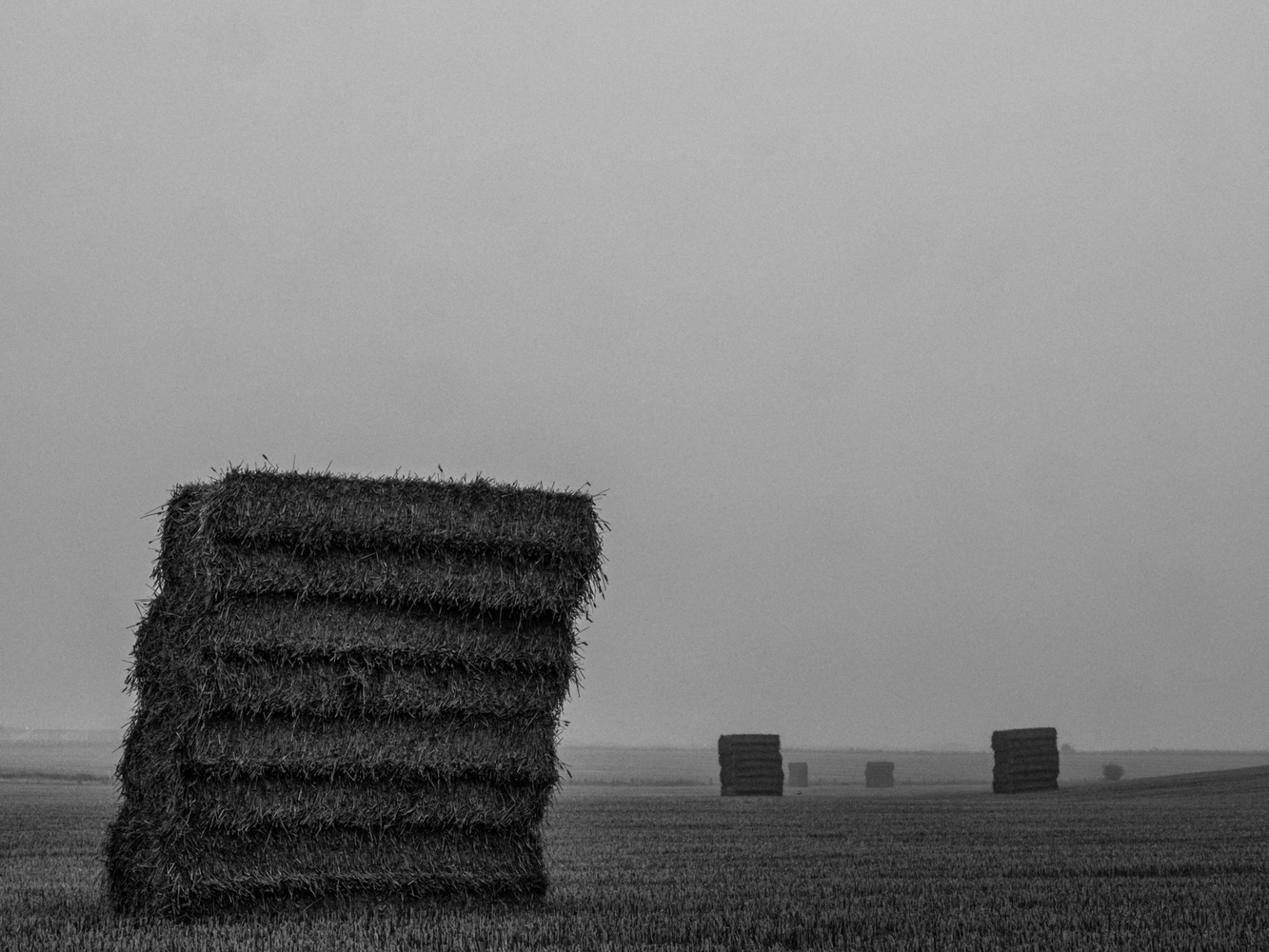There are a lot of sayings bandied around in photography that sound impressive but are meaningless. However, an image being greater than the sum of its parts is something we should heed as it is the basis of how our minds perceive images. Here are seven ways to achieve this.
Learning the rules of photography is important. If we study why a photograph looks great, then our eye for a good composition helps us to create well-composed images without thinking about it. For instance, many novice photographers start out by learning the rule of thirds. Like riding a bike, framing a shot in this way becomes natural. Next, they may discover leading lines, and those become part of their subconscious too. Then they might investigate the golden ratio and delve into color theory. As they become ever more advanced, so the new compositional techniques become embedded in their minds too. With enough practice, those too are used without conscious thought.
People often spout that we should break photographic rules. However, even when doing that, we are usually applying other established techniques instead, even if we are not necessarily aware of them.
But have you ever thought about why certain compositions work and others don’t? It is all to do with how our brains process the scenes set before us. Delving into this can help us perfect our photography.

An atypical composition
When we look at the world around us, our minds organize the objects we see, grouping them in certain ways that allow us to perceive the scene holistically. It’s as well that we see groups of objects and not individually, as we would be overcome with sensory overload.
The closer objects are to one another, the more likely we are to group them together. For example, when we stand back and look at a building, we see the wall, not particular bricks. Likewise, we observe a copse and not the individual trees. Move closer and the groupings become different; we see the whole tree. However, not all its individual parts are acknowledged in our minds. If we get closer still, then each of those smaller features form their own groups: leaves, twigs, and bark patterns. However, we don’t find the veins of the leaves, the lichen growing on the twigs, or the insects hiding between the bark’s contours. This kind of grouping is known as the law of proximity.

Our mind thinks of similar objects grouped together as one object, like this skein of geese.
Moreover, a murmuration of starlings is perceived as a single body and not as each individual bird. Yet, the mind sees this collection of birds as a shape in the sky. It’s that shape that our brain primarily notices.

We also see a stone circle as a circle and not a collection of individual stones. This is because your mind fills in the blanks, creating shapes that don’t really exist. That process helps us to simplify a scene, it is what is known as the law of closure. In other words, we cannot help but see the overall shape formed by the grouped objects.

Perhaps the most well-known demonstration of the law of closure is the following diagram. Named after an Italian psychologist who designed the first version of it, the Kanisza triangle makes the mind believe a black triangle exists when there are only three circles with pizza slices cut from them. You also assume the existence of a white triangle, when there are, in fact, three V shapes.

A variation of the Kanizsa Triangle.
Additionally, the mind also has an expectation that grouped items will act together, behaving as one object and not individually. This is known as the law of common fate. For example, in the following shot, the kayaks are grouped in our minds as one entity and the arctic terns another. We expect both of those groups to behave independently of the other, but coherently within their own set.

The proximity of individual elements, like the bricks in the wall, the leaves on a tree, and the flock of birds, is just one way our mind groups objects. But how about when items are further apart? The mind also groups objects together if they are similar. This can be in color, size, shape, or form. If some items within a frame look alike then, even if they are not in proximity with one another, we will still group them together if they are similar in some way. Of course, this is known as the law of similarity.

Although physically far apart, our mind groups these haystacks together,
Removing distracting elements, and reducing clutter, usually works well in photography. This is because the human mind is drawn towards simplicity. Yes, of course, it’s called the law of simplicity. That goes beyond removing subjects from the frame. The mind creates order in complex shapes and patterns to simplify what we see. Think of the constellations of stars. We look at the sky and see the shape of Orion, but that is only in our mind's eye. In reality, its nearest star, Bellatrix, is only 245 light-years away from Earth, whereas Alnilam 1342 light-years distant. There is nothing connecting these two stars except the pattern that has been recognized around the globe since ancient times.
In photography, simplicity can also be brought by creating balance in an image, which is pleasing to the human mind. Symmetry is a basic form of balance, and there are other means of achieving it too, which I will talk about in a future article.

The mind seeks simplicity
The law of good continuation states that the mind will extend shapes and lines beyond their endpoint. In landscape photography, we may have a fallen branch in the foreground that points to a subject in the distance, or there may be a series of rocks that point away to the horizon. The viewer’s eye follows that line, drawing an invisible line between them.

Our mind draws us up beyond the endpoints of these masts to the sky above.
Another thing we photographers often do is to try to make the subject stand out from its background. If an image is cluttered with many similar-looking objects, then the point of focus will be lost. We use various tools to make the subject stand out from the background, such as selective lighting, shallow depth of field, and the choice of subject color. This allows the chosen subject to be perceived.

Segregating one gull from the flock using a shallow depth of field.
Using Gestalt Theory in Photography
These seven laws are part of what is called Gestalt theory. Although stemming from some sometimes-flawed psychological ideas that originated in Austria and Germany at the start of the 1900s – observed objects don’t physically mirror themselves in our brains – the modern approach to the theory does help us to understand why certain compositions work and others don’t. We can utilize these techniques to draw the eye to the parts of the photograph that we want the viewer to pay attention to.
Gestalt theory explains that minds like simplicity, and that is achieved by grouping elements in a scene. We also automatically fill in missing gaps, where there is sufficient information to do so. Thus, the whole image is greater than the sum of its parts because of the connections the mind makes between objects. It also states that the mind jumps from seeing the individual elements to understanding the entire picture.

We see hundreds of points, then we make the leap to acknowledging the entire image. We may then group the birds according to their distance from the camera and their apparent size. There is no single point of focus and, although flying in different directions, we see the birds moving together.
By learning and understanding the principles, we can speed up or slow down the time it takes for the viewer to understand the meaning of our photographs. We can also choose whether we want to abide by the standard constraints that are applied to our photos, or instead deliberately break these and seek disharmony. After all, a lot of photography is shot for art’s sake, and good art almost always challenges the established and accepted practices.
This article is just lightly touching the surface of Gestalt theory; there are plenty of resources online and books on the subject, and I am planning to revisit some of those rules in their own articles. It is widely used in design and psychology, and its tools can be applied across all arts, so there is no reason why we should not consider it as another useful set of tools for photography.
It would be great to see some of your images in the comments where one or more of the Gestalt rules apply, and I would really enjoy hearing your thoughts on the subject. Thank you for reading.







What a great article, Ivor! So well articulated and well thought out. Thanks for that!
I think that depth of field can play a large role in the way our mind groups the things in a photo, and also in how long we spend looking at the various groupings within the frame. Depth of field is one of the tools that we photographers have available to us to influence the way the viewer sees our images.
Absolutely, Tom. Thanks for the nice comment, and what a superb shot. This is a great photo for illustrating proximity, separation and similarity. (I'm not familiar with birds over there. Are they snow geese?)
Thanks, Ivor!
These are Ross's Geese. Very similar to Snow Geese, and often the two species are mixed together in the same flocks. But these Ross's Geese are smaller, and more refined looking - no awkwardness about the head and bill that Snow Geese have.
A wildlife artist once told me, "if you take everything that is wrong and awkward looking about a Snow Goose, and fix it, you have a Ross's Goose."
"Learning the rules of photography is important."
There are no rules in photography.
Not quite. You first learn all the rules of art and photography to the point of second nature. THEN throw away the rule book...
Not sure If I agree with you, Brendan. Getting to grips with exposure, composition, and color theory greatly benefit photographers, and when we learn those we are commonly talking about the rules that apply to them. They could equally be called theories, guidelines, or approaches, but most people call them rules. As Douglas Bader is famously supposed to have said, “Rules are for the obedience of fools and the guidance of wise men.”
“Remove the lens cap.”
2. Make sure there's film in the camera (trad.), or battery, mem card. 3. Don't drop camera in the ocean. 4. Keep clear filter, lens cap, and lens shade on, cause you're gonna drop or bash camera someday. 5. Don't drop camera. Etc.
Thanks for debate, Brendan. Hendrix proved that "no rules for playing guitar", but he hadta have electricity and proper tech, to be heard by us. Replies above infer that it's a matter of words - OK with you to re- phrase "No LIMITS in photography" ??
If you're so over- exposed that you have only a blown-out white frame, or black, isn't that a "rule" ?
It's scientific fact that human eyesight and psychology have traits that affect perception. As Igor replied, these might be called guidelines - leading lines, rule of thirds, etc.
Consuming too many gear articles kills brain cells. Fortunately, we also have Ivor's articles :)
Thank you, Gary. That's nice.
Thank 🙏🏻
Thank you!
Logged in to tell you this article is great. Thanks!
Thank you, Isaak. That's kind of you.
"Ya know...sometimes ya just gotta say...'To hell with the rules. Just shoot the damn thing'.
TJG
Very nice article sir.
Thanks for taking the time to reply, Timothy
Great article! Are there any particular books or resources you especially like regarding Gestalt theory?
My research for this was done decades ago when I was a boy reading my mother's psychology books when she was a mental health professional, and those will be long out of print. I refreshed it by reading loads of psychology articles online. There will be art books too, that cover this. I'll see what I can find.
Ivor, very interesting and well crafted article. I look forward to more.
Ivor has already given us more! Check out the article he just put out today, that covers chiaroscuro, high key, and low key imagery. I love it!
Thanks, Jerry. I'm glad you enjoyed it. (Thank you Tom, too.)
If you want more, then please read my most recent articles:
https://fstoppers.com/opinion/deeper-understanding-low-and-high-key-phot...
https://fstoppers.com/education/finding-your-own-photographic-style-and-...
https://fstoppers.com/education/creative-photography-lessons-beatles-get...
https://fstoppers.com/opinion/stand-your-ground-it-will-make-better-phot...
Igor, A couple contradictions: 1. The sunset is not "atypical", per caption. It's a very typical "snapshot". 2. Re the K_ Triangle- the "Star of David" is such a universal symbol, that illusion of such is not a valid conclusion. Would it work for a 5 or 7 point star, or without extreme B/W contrast? - or if color is used? 3. Re "mind pleased by simplicity" - image of "hundreds of birds" is questionable, how do you account for success of the complexity of Jackson Pollock's huge "spatter paintings", or Bosch's image of Hell?
Any comment of the subject "requiring" placement in the frame ? eg A bird having open space to "fly into" frame, rather than flying "out" ?
Very engaging article, thanks for reminding us about the psychology involved.
Thanks, (my first visit)
- Mark T, Michigan USA , 29JAN22
1. The author captioned the shot "atypical composition".
2. Valid conclusion - yes. https://www.shutterstock.com/image-vector/square-illusory-contour-mind-t...
3. "Mind pleased by simplicity", but also by many other things like color contrast, texture, patterns etc.
Hi Mark, thanks for the comments, although my name isn't Igor. Cool name though, I might change it.
Perhaps I should clarify my point. The shot was sunrise, not sunset, and it was the composition that I was saying was atypical, not the subject. Saying that, one of the great things about sunrises and sunsets is that every one is unique, one of the reasons they make such compelling subjects.
As Nick illustrates in his answer above, yes it does work for other shapes. Have a look online at the phantom edge phenomenon, the Ehresnstein illusion, and this image https://www.newworldencyclopedia.org/d/images/6/63/Reification.jpg
There are also hundreds of psychology books that provide more examples.
The success of complex images is that the brain simplifies them, which is basically what the article is partially about. If you look at Pollock's paintings, your mind will form patterns from the random shapes, just as we do when we look at clouds. Not comparing my photograph to Pollock's great work, but my mind also organizes that shot into patterns with the realization that there are layers of birds. Of course his paintings have other features that make them compelling. The mind is hugely complex, and Gestalt theory is just one small aspect of how our mind works, and I've just scratched the surface here.
Placement in the frame, I've touched briefly on the subject before, https://fstoppers.com/education/fantastic-photography-relies-more-left-a.... But I will write more about it soon.
Thanks for taking the time to comment and for the questions.
Great article, thanks.
Thank you, Nick.
Someone asked if the mind fills in the gaps for more complex shapes. The answer is yes. Check out the logos of the Major Baseball League, the US Postal Service, NBC, and a host of other logos where the mind is left to fill in the blanks. Gestalt is a powerful tool in marketing.